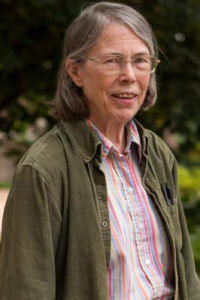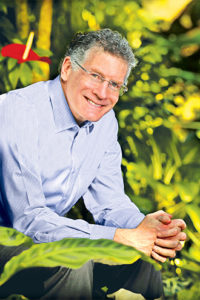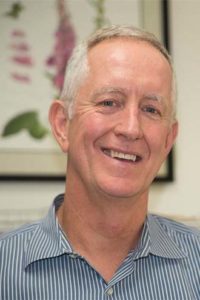Three scientists at Washington University in St. Louis are among the 84 new members and 21 foreign associates elected May 1 to the National Academy of Sciences (NAS) in recognition of their distinguished and continuing achievements in original research.
Election to the academy is considered one of the highest honors accorded a U.S. scientist or engineer.
Washington University’s new academy members are all in the Department of Biology in Arts & Sciences. They are Sarah C.R. Elgin, the Viktor Hamburger Professor of Arts & Sciences; Jonathan B. Losos, the William H. Danforth Distinguished University Professor; and Richard D. Vierstra, the George and Charmaine Mallinckrodt Professor of Biology.
With these three new members, Washington University now has had 56 faculty members elected to the prestigious academy.
“I am delighted to congratulate Sally, Jonathan and Richard upon their election to the National Academy of Sciences. This important recognition adds to the excellent reputation of the Department of Biology and signals the high quality of our faculty working at the forefront of important areas of research,” said Chancellor Mark S. Wrighton.
“I am thrilled at this news and extend my warmest congratulations to Sally, Jonathan and Rick for this well-deserved recognition,” said Barbara A. Schaal, dean of the faculty of Arts & Sciences and the Mary-Dell Chilton Distinguished Professor. “An extraordinary result like this in one year shows the depth of talent within the Department of Biology.” Schaal has been a member of NAS since 1999, and she served as NAS vice president for eight years.
Elgin

Elgin joined the faculty of Arts & Sciences in 1981. She is a molecular biologist whose research focus is on the role of chromatin structure in gene regulation. She also is known for her passion for science outreach and for expanding research opportunities for students.
Elgin is a professor of biology and of education, both in Arts & Sciences, and a professor of biochemistry and molecular biophysics and of genetics in the School of Medicine.
Chromatin is the complex of DNA and the proteins that package it so that the DNA will fit into the small nucleus of each cell, while maintaining functional organization.
Elgin and her research team study the chromosomal proteins that promote packaging into euchromatin or heterochromatin, alternative forms associated with gene expression and gene silencing, respectively — both forms critical to the health and development of multicellular organisms.
Her team at Washington University is noted for identifying and characterizing Heterochromatin Protein 1 (HP1) — a key protein found in organisms ranging from the ancient yeast S. pombe to humans — which plays a central role in silencing the transposable elements found in eukaryotic genomes.
Elgin is also an elected fellow of the American Academy of Arts & Sciences. She has received several other university, state and national science and teaching awards — including most recently the university’s Arthur Holly Compton Faculty Achievement Award.
Prior to joining Washington University, Elgin served on the faculty at Harvard University. She graduated from Pomona College with a bachelor’s degree in chemistry in 1967 and earned her doctorate from California Institute of Technology in 1972. In 2017, she received an honorary doctorate from Pomona.
Learn more about Elgin in The Source.
Losos

Losos is the inaugural holder of the William H. Danforth Distinguished University Professorship, established in 2016 by the university in honor of Danforth, the former chancellor, on the occasion of his 90th birthday.
Losos leads the Living Earth CollaborativeTM, headquartered at Washington University.
An internationally renowned scholar in the field of evolutionary biology, Losos recently returned to Washington University, where he has deep roots and a long history, including as a member of the faculty from 1992-2006.
He previously served as the Lehner Professor for the Study of Latin America, professor of organismic and evolutionary biology, and curator in herpetology at the Museum of Comparative Zoology at Harvard University.
Losos’ study of the behavioral and evolutionary ecology of lizards has taken him around the globe and firmly established his position as a leading international expert on the biodiversity of species.
The Living Earth CollaborativeTM is a joint effort among the university and two of the nation’s leading institutions in the study and preservation of plants and animals: the Missouri Botanical Garden and the Saint Louis Zoo. Together, they are creating a new academic center dedicated to advancing the study of biodiversity to help ensure the future of Earth’s species in their many forms.
Losos earned a bachelor’s degree in biology at Harvard University in 1984 and a doctorate in zoology at the University of California, Berkeley, in 1989.
Learn more about Losos and his work in Washington magazine.
Vierstra

Vierstra, recognized as one of the world’s leaders in plant science, joined Washington University in 2015 after 30 years at the University of Wisconsin-Madison, where he and his research team unraveled the secrets of plant pathways that destroy unwanted proteins and allow plants to sense daylight, so that they know when to germinate and flower.
At Washington University, Vierstra is the inaugural holder of the George and Charmaine Mallinckrodt Distinguished Professorship.
Vierstra’s lab group is interested in the control of processes that regulate growth. Scientists have long known that the creation of proteins is crucial for most, if not all, aspects of plant biology, but only recently have they begun to understand that protein destruction is equally important.
Vierstra’s lab studies the ubiquitin-26S proteasome and autophagy systems, the main recycling routes in animals and plants. Disruptions in either route are one of the prime causes of many human diseases, including cancer, Alzheimer’s, Parkinson’s and ALS.
Another major area of research for the Vierstra lab is phytochrome, a light-sensing pigment found in the leaves of most plants that allows them to detect the time of day and the season. Here, Vierstra’s team is using structural approaches to understand how these photoreceptors work at the atomic level.
Vierstra is a fellow of the American Society of Plant Biologists and the American Association for the Advancement of Science.
He earned a bachelor’s degree in biology and chemistry from the University of Connecticut in 1976 and his doctorate in plant biology from the Department of Energy’s Plant Research Laboratory at Michigan State University in 1980.




